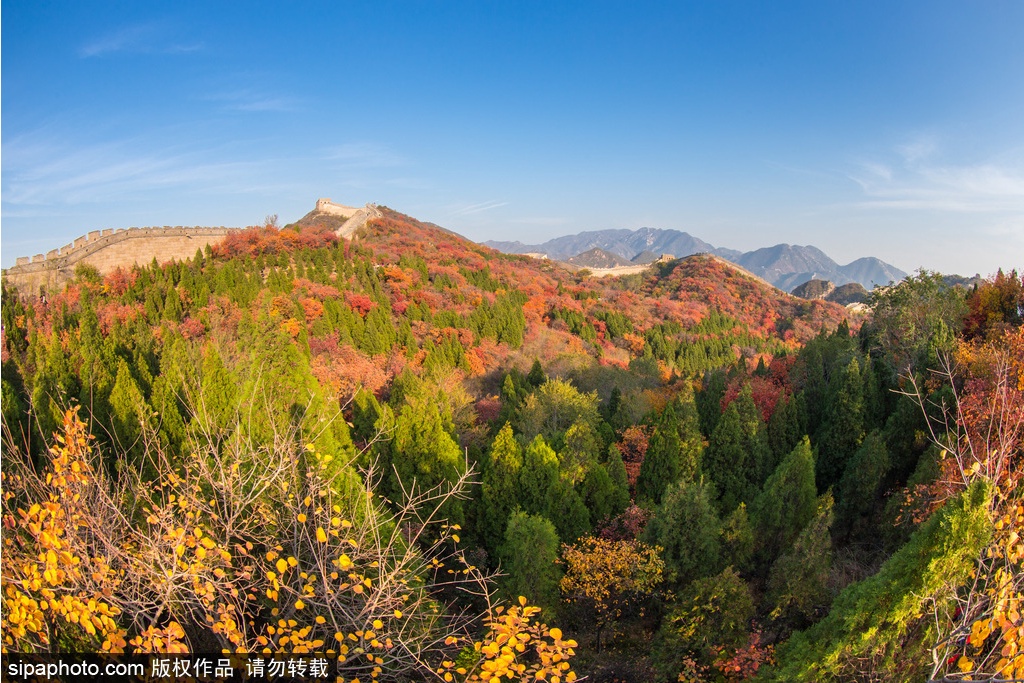The Badaling Great Wall is located in the southwest of Yanqing County in Beijing, capital of China, and the north gateway of Juyongguan valley. It’s of strategic importance for the capital city. The towering fortifications stand among precipitous mountains and extend to the northwest China. The great wall served as a crucial guardian of Beijing and witnessed plentiful military conflicts in ancient China. As an old Chinese saying goes, the steepness of Juyongguan lies not in the fort but in Badaling. With its long history, magnificent architecture and spectacular scenery, the Badaling Great Wall topped thousands of famous strategic passes along the Great Wall.

The east and west gate towers of Guancheng or the defensive fort hang plaques inscribed “Juyong Waizhen”, a strategic town outside Juyongguan, and “Beimen Suoyue”, which means a northern spot of great military importance. Both of the two gate towers adopt a masonry structure, with a platform on the gate arch and also passages in the north and south that connect the defensive walls. The Badaling Great Wall was built along the mountains of different heights. The passage is broad enough for five horses to march together, or ten soldiers to keep abreast. Below the city walls are strip-shaped stone stylobates, with giant bricks as the upper part. The passage was paved with square stones, with crenel and shooting holes on the parapet for detection and shooting enemies. Embraced by folds of green mountains and crowds of plants, Badaling Great Wall was in full flourish in the Ming Dynasty. “Juyong Diecui” in Chinese means “gorgeous green landscape in Juyongguan”. It has been listed in the “Eight Great Sights of Beijing” and granted the laudatory title of one of the “Nine Great Passes in the World” since the ancient times. Gu Yanwu, a scholar of the late Ming Dynasty, once climbed the Badaling Great Wall for twice, and composed the poem to highly praise the Badaling Great Wall, which says that “Tracing back to the construction scale of the Great Wall, the Qin Dynasty makes great contributions to expand it from the ancient to the present”.
Moreover, the origin of its name can be referred to historical records and folk tales. The research process has proved that Badaling Great Wall has enjoyed high reputation in the world. A local legend has it that in the Yuan Dynasty, an emperor named “Bada Lili” once had his inspection tour to Badaling Great Wall. Being greatly pleased, the emperor granted it such a name. Actually, Badaling is the hometown of an emperor of the Yuan Dynasty, named “Ayurbarwada” instead of “Bada Lili”. There is also legend saying that in the late Ming Dynasty, the armed forces led by Li Zicheng marched toward Badaling Great Wall. Faced with another seven impregnable passes, Li Zicheng was pessimistic about breaking through the eighth pass with seven strategic passes having not been defeated, and then changed his route. Among all legends, the one described in Local History and Geographic Evolution of Capital Chang’an in the Ming Dynasty is the most reliable, saying that Badaling was named as there are many roads in all directions.
Nowadays, the Badaling Great Wall has been listed in the World Cultural Heritage and crowned as one of the New Seven Wonders of the World. To date, 150 million visitors from home and abroad have travelled to Badaling Great Wall, including over 460 heads of states and a large number of globally renowned figures.



